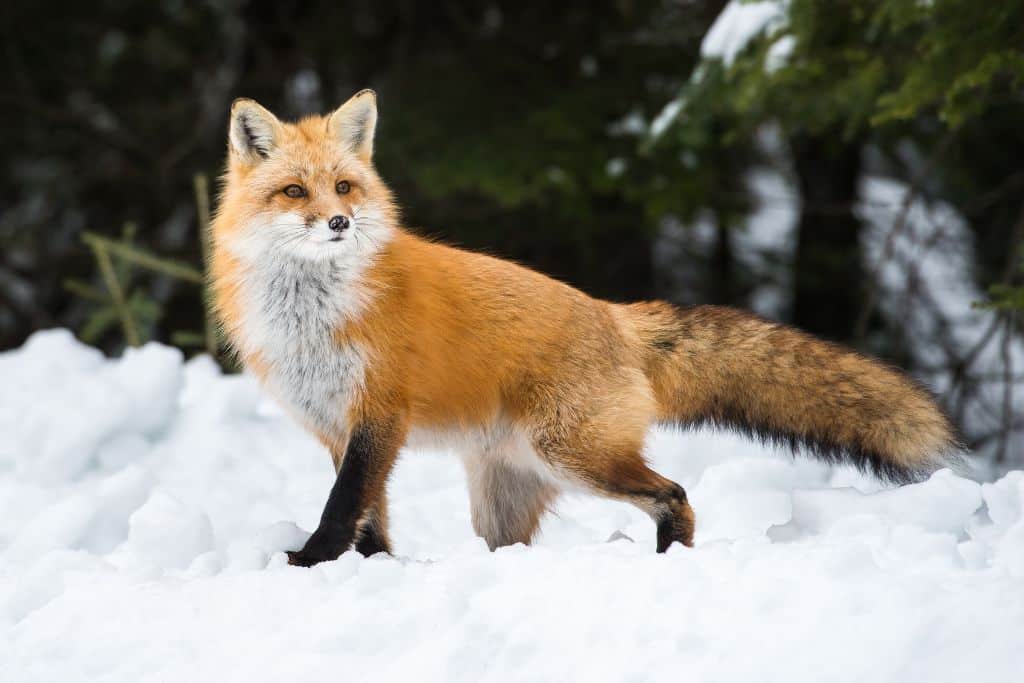From a mere 790 million people in the year 1750 to 8 billion today, we humans have unequivocally become the greatest modifier and influencer of the natural world. In fact, since the turn of the century, mounting evidence has suggested that anthropogenic activities are leading to dramatic, diverse, and far-reaching evolutionary changes in organisms. This article attempts to expound on this fact through the particular case of the Red Fox. Whether it is the selective harvest of their pelts or their gradual domestication in urban areas, humanity has affected their evolution in more ways than one.
—
By Arushi Arora and Dr. Shweta Rana
Selective Harvest of the Silver Fox
The Silver Fox is a melanistic form of the Red Fox. These animals display a great deal of pelt variation. Some are glossy black with a silvery appearance, while some are also bluish-grey. The fur of the homozygous silver morph (Silver Fox), was historically worn by nobles in many parts of the world, including Russia, Western Europe, and China. Being more economically valued, it costs approximately three times more than that of the heterozygous or red morph (Red Fox).
British scientist J.B.S. Haldane used experimental data and mathematical modelling to provide one of the very first estimates of the potency of selection in an animal population. The frequency of the more sought-after silver morph dipped from approximately 16% in 1830 to 5% in 1930s Canada. Thus, due to two centuries of selective harvest, the red fox is gradually losing its silver morph to ensure the better survival of its species.
Domestication and Its Evolutionary Impacts
Due to their consistently declining habitat, Red Foxes are undergoing the “Domestication Syndrome” as they have gradually sought refuge in human environments. Urban foxes tend to stay close to their new dwellings, thus, drastically reducing their chances of mating with rural foxes. Over time, foxes in cities have developed helpful traits to aid their survival alongside human beings.
Some of the prominent evolutionary changes noticed are:
1. Increased Body Size and Mass
The larger and heavier bodies of the urban foxes, due to the increased access to a plentiful supply of high-quality anthropogenic food, is ultimately beneficial since adult body size and mass is a reliable predictor of the reproductive success, survival, and fitness of a species.
2. Changes in Skull Morphology
In urban environments, a shorter, wider snout is ideal, where food is more likely to be accessed as stationary patches of human leftovers. These kinds of foods might require a much greater force (grip) to access them, thereby explaining the presence of the wider snout. While this grants a higher mechanical advantage, it comes with a significantly reduced closing speed of the jaw. On the other hand, in a rural habitat, they possess a longer, narrower snout. This increase in the length of the jaw confers an increased jaw-closing speed to the animal, which aids in the capture of motile prey like birds, mice, and rabbits.
Furthermore, foxes in urban environments have evolved a larger brain, and hence, a larger brain case, due to the increased cognitive demands in such environments. Expectedly, a larger brain case facilitates the innovative behaviours that a species must possess to persist in human dwellings. This includes but is not limited to the exploitation of novel food sources and the evasion of unknown threats.
3. Increased Sexual Dimorphism and Potential Feminisation
Evolutionary selection may be stronger on females due to the responsibilities of motherhood. This means that, perhaps, they engage with urban foraging conditions more intensely and frequently than males do, particularly due to the high energy demands during parental care. Consequently, this might confer higher cognitive stresses on females, thus, leading to relatively larger braincases. In contrast, during periods of paternal care, male red foxes engage in vigilant behaviour more frequently. This involves defensive actions against potential threats, which favours the faster, more elongated jaws that they possess. Moreover, since the evolutionary response to urban settings is stronger in females, it could possibly lead to an overall “feminisation” of urban populations.
Other Evolutionary Changes
Docility, depigmentation (increased frequency of white or brown patches) in red foxes, and the presence of floppy ears and curly tails are other modified traits that have been visually observed in numerous red fox populations. The evolution of these features can be attributed to domestication, which, in turn, affects neural crest development. The neural crest present in developing embryos of vertebrates is responsible for determining the number of features of animal physiology – facial, skeletal, and connective tissues, teeth, cartilage level, as well as body pigmentation.
It seems quite incredulous that our presence and activities can influence and alter the genetic makeup of hundreds, if not thousands, of species. The red fox is merely one such example.
Evolution induced due to non-random harvest greatly increases the time needed by the over-harvested populations to recover once the harvest is curtailed. In the case of the silver fox, its populations may never recover even if strict conservation measures are imposed.
Domestication, on the other hand, does not seem to be negatively affecting the populations of the red fox. However, one must note that the red fox is able to thrive in urban environments simply because of its ability to evolve rapidly under the “unnatural selection” imposed by us. Not all species tend to be that lucky. Most perish or are forced to relocate when their habitat is encroached upon. Thus, understanding aspects of species evolution in response to anthropogenic influence could massively increase our ability to predict the manner in which other animal populations might respond to human environments. And this will allow us to implement appropriate protection measures well in advance.
Increasing government and private investment in such research and encouraging it in higher education institutions is, perhaps, the first step in this direction.
—
About the authors:
Dr. Shweta Rana is the Head of the Department of Physical and Natural Sciences and Associate Professor of Biology and Environmental Studies at the FLAME University.
Arushi Arora is an undergraduate student in Applied Mathematics and Environmental Studies at FLAME University.
You might also like: Are Humans an Invasive Species?


















